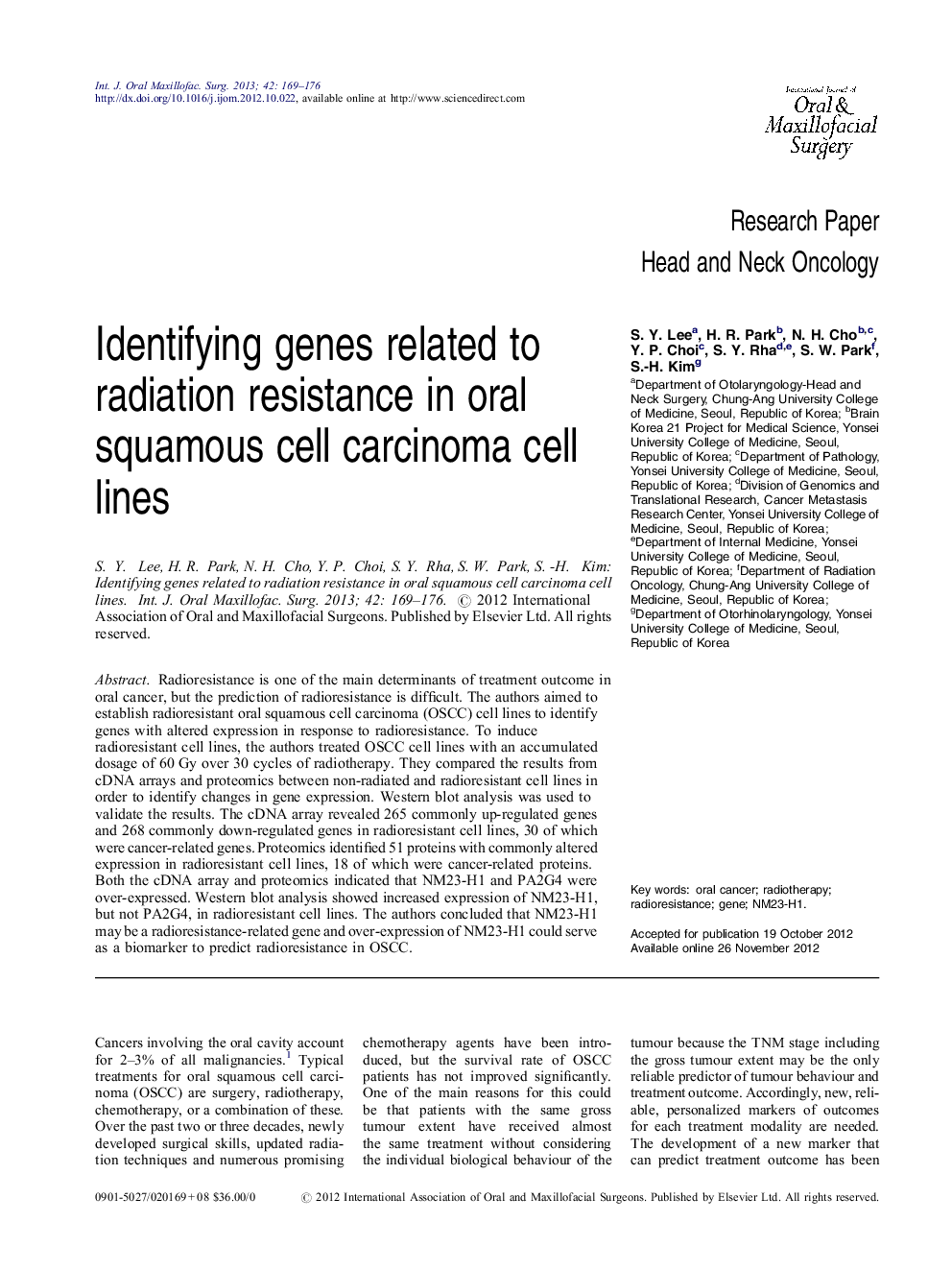| Article ID | Journal | Published Year | Pages | File Type |
|---|---|---|---|---|
| 3132912 | International Journal of Oral and Maxillofacial Surgery | 2013 | 8 Pages |
Radioresistance is one of the main determinants of treatment outcome in oral cancer, but the prediction of radioresistance is difficult. The authors aimed to establish radioresistant oral squamous cell carcinoma (OSCC) cell lines to identify genes with altered expression in response to radioresistance. To induce radioresistant cell lines, the authors treated OSCC cell lines with an accumulated dosage of 60 Gy over 30 cycles of radiotherapy. They compared the results from cDNA arrays and proteomics between non-radiated and radioresistant cell lines in order to identify changes in gene expression. Western blot analysis was used to validate the results. The cDNA array revealed 265 commonly up-regulated genes and 268 commonly down-regulated genes in radioresistant cell lines, 30 of which were cancer-related genes. Proteomics identified 51 proteins with commonly altered expression in radioresistant cell lines, 18 of which were cancer-related proteins. Both the cDNA array and proteomics indicated that NM23-H1 and PA2G4 were over-expressed. Western blot analysis showed increased expression of NM23-H1, but not PA2G4, in radioresistant cell lines. The authors concluded that NM23-H1 may be a radioresistance-related gene and over-expression of NM23-H1 could serve as a biomarker to predict radioresistance in OSCC.
